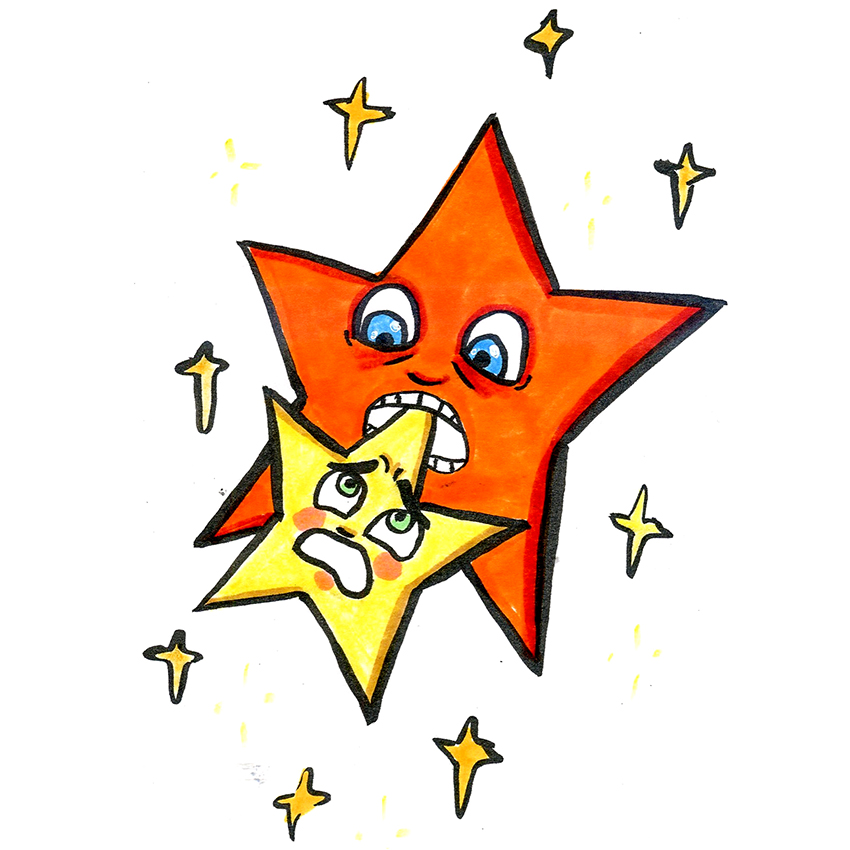UT astronomy professor J. Craig Wheeler recently discovered more information about the history of red supergiant Betelgeuse, the ninth-brightest star in the night sky and the shoulder of the constellation Orion.
Wheeler recently released research claiming that Betelgeuse, pronounced “Beetlejuice,” may have originally had a companion star that it later absorbed.
Wheeler first began studying Betelgeuse about seven years ago, in an attempt to estimate when the star will explode as a supernova. His new companion-star theory was formed when studying models of Betelgeuse to analyze its size and temperature. When studying the models, he also noticed irregularities about the speed at which the star spins.
According to Wheeler’s paper, Betelgeuse spins at approximately 15 kilometers per second while most red supergiants spin at about 0.1 kilometers per second. Wheeler said one explanation for this is that Betelgeuse gained the angular momentum of the other star it consumed.
“Nobody had ever looked at models of the rotation,” Wheeler said. “It’s spinning much too fast compared to the (standard) model of a red giant. As a red giant expands, it slows down. We just couldn’t understand how (Betelgeuse) is rotating so fast, which led us to our hypothesis.”
Wheeler added that there is evidence suggesting Betelgeuse, at some point, shot matter out into space, which is consistent with a merger between two stars. However, he said this does not confirm his theory.
“I have no definite proof that the companion star existed,” Wheeler said. “We explored other possibilities, like maybe the data was incorrect or something was wrong with the computer models, but we kind of ruled that out because the (speed) discrepancy is so big. People might come up with some other explanations, but I haven’t yet.”
If the companion star did exist, Wheeler estimates that it would have been about the mass of the sun, assuming it was located where Betelgeuse’s outer surface is now. Wheeler said this assumption raises more questions though.
“We haven’t yet addressed the question of how (the companion star) got there,” Wheeler said. “Was it born there or was it drug in? There’s a whole suite of issues we are just now defining. It’s difficult to answer questions like these for one particular system. It’s easier to address them statistically. Often progress comes by struggling with a question, though.”
The next stage for Wheeler’s team is studying the inside of Betelgeuse through a technique known as asteroseismology, which uses waves hitting the surface of a star to produce images of the star’s interior. Although Wheeler said it is technically more difficult to apply this process to a large star like Betelgeuse, asteroseismology should provide a more definite answer as to the star’s mass. He said he hopes that answer will help make progress determining when Betelgeuse will explode; his current estimate is around 100,000 years.
“I would still like to pin (the timeframe) down more and what the clues would be if it continued as it is now,” Wheeler said. “It’s an interesting thing to try and work out. We know roughly what (the explosion) will look like. It will be about as bright as the moon for about three months, then fade away. It will be pretty dramatic when it goes.”
Wheeler said that while astronomy doesn’t affect people directly, it teaches them about humanity’s place in the universe.
“You, I or anybody else can go out tonight, find the constellation of Orion and see Betelgeuse,” Wheeler said. “You can look at that star with your own eyes and be assured it will blow up someday. These astronomical questions teach us about our place — how we came to be and how we can be.”















